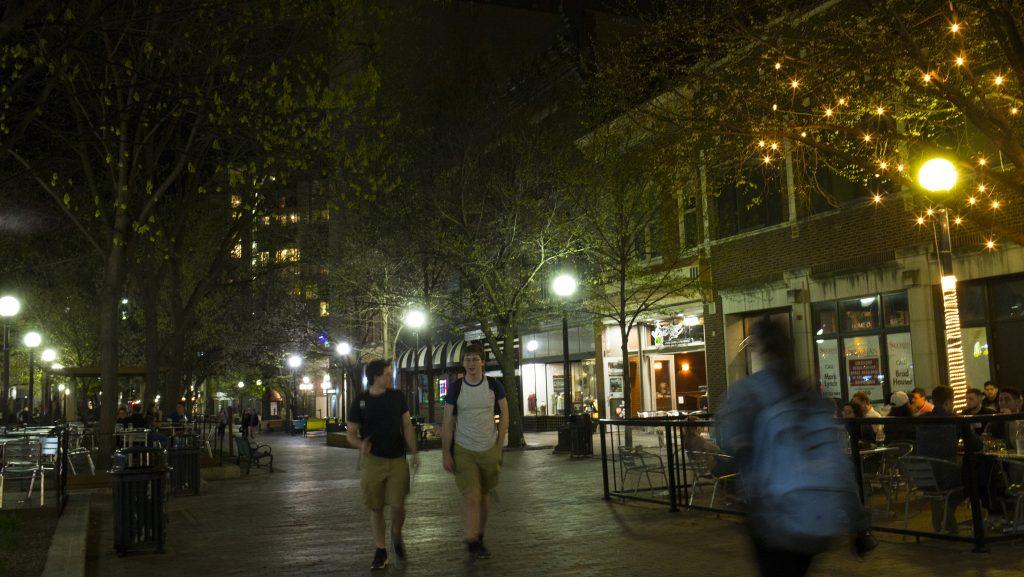Newby: The pressing problem of street harassment
Street harassment against women exists in often unnoticed, yet entirely fear-ridden ways in almost every environment.
The Daily Iowan; Photos by Josep
People walk on the Ped Mall on Tuesday, April 18, 2017. City Council voted Tuesday to allow for an open container ordnance allowing people to take a drink from a bar into the street to accommodate for community events. (The Daily Iowan/Joseph Cress)
August 30, 2018
I was fumbling with a bag of frozen vegetables when I saw him sauntering down the aisle, pausing a few feet from me and my roommate. Eyeing a frozen pizza, turning it over in his hands, feigning interest, putting it back, and flitting eyes over at us again. Moving when we moved.
Tossing frozen meals into our cart, we moved from aisle to aisle. It was the middle of the afternoon on a Saturday, and we were grocery shopping. And again, like a shadow, he shifted a few feet behind us throughout every section, every aisle, never losing sight of us, never falling out of step with us.
When my back was turned, he brushed past my roommate, hurling vulgar comments in our direction. Unfiltered. In the broad light of day. And still, entirely unseen by the people wedged in the crowded grocery store.
It was easy to feel fear then, just as it has been countless times before. Stopping at gas stations where the man at the register restarts the transaction three times, just so he can keep me standing there listening to his crude and sexist remarks a moment longer. Or navigating my way through a campus that feels calm and easy during the day, yet cold and unfamiliar at night.
On the edge of harassment toward women, somewhere between friendly and entirely unfair, is the common, everyday occurances of street harassment. It exists on street corners, dwells in coffee shops, and finds itself in between classes.
And before the devastating problem of assault is addressed with Title IX complaints or lawsuits, there lies the low blows of casual attacks against women that push an entire gender population into crippling fear and anxiety.
Stop Street Harassment, a nonprofit organization committed to documenting and ending gender-based harassment, identifies these blows as leering, honking and whistling, sexually explicit and sexist comments, vulgar gestures, kissing noises, following, blocking paths, sexual touching or grabbing, and more.
A recent NPR survey found that 81 percent of women have been sexually or street harassed in public places, including verbal and physical harassment.
These aggressions find their way onto campus, into grocery stores, at gas stations, crosswalks, and in every corner of day and night, and they move in making women feel isolated, inferior, uncomfortable, and afraid.
Moving back to Iowa City late this summer brought with it an unfamiliar fear that led me to talking with my roommates, my friends, and other members of my community to find out whether these experiences are shared. And with every woman I talked with — they are. Even more so, an alarming number of them claimed to carry pepper spray or Tasers with them at all times for self-defense.
The problem of street harassment isn’t grounded in what women wear, what aisle of the grocery store they’ve made their way down, or how late at night they’re pumping gas. The problem is that some men seem to flex dominance in devastatingly deprecating ways toward women by following them, tossing inappropriate and aggressive comments at them, and using their position to push women into a place of utter fear.
And perhaps, in order to put a permanent stop to street harassment, we have to start by paying more attention and recognizing the beginnings of harassment before it ends in assault.




